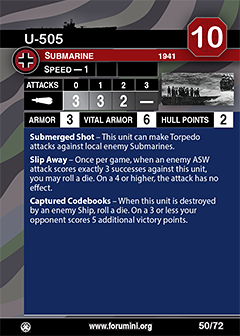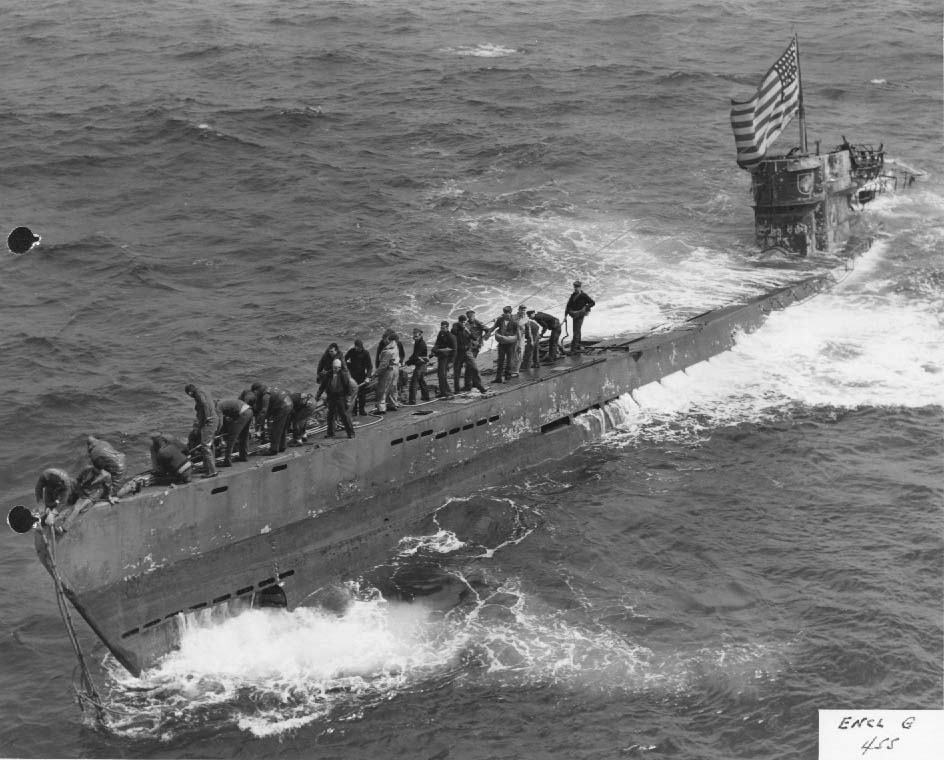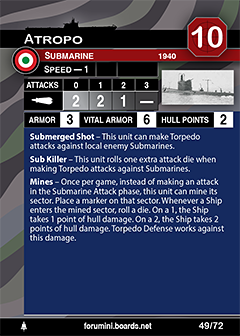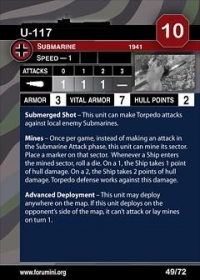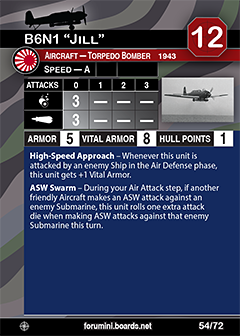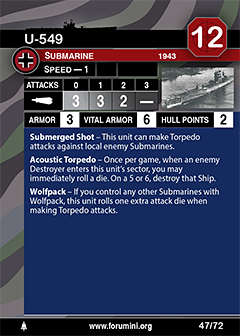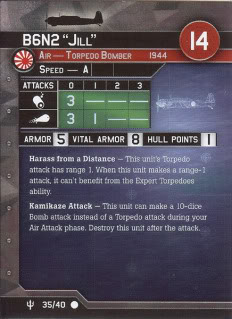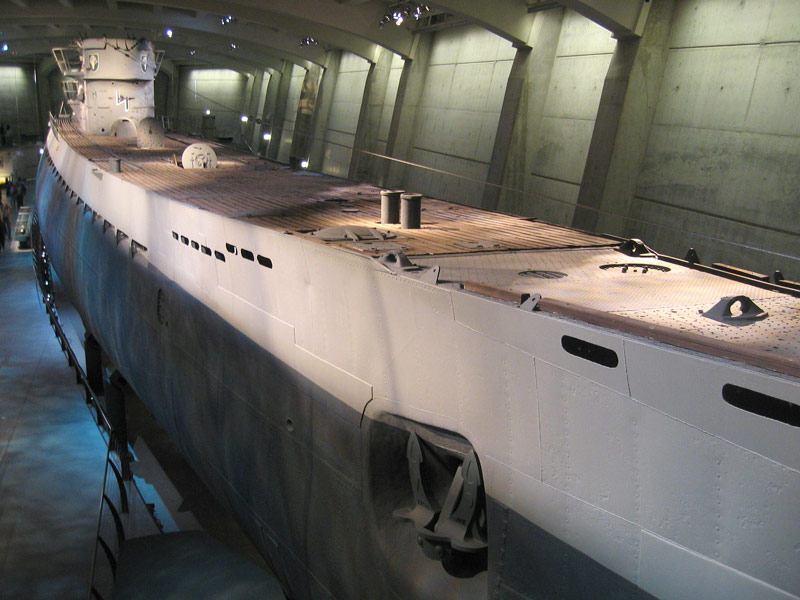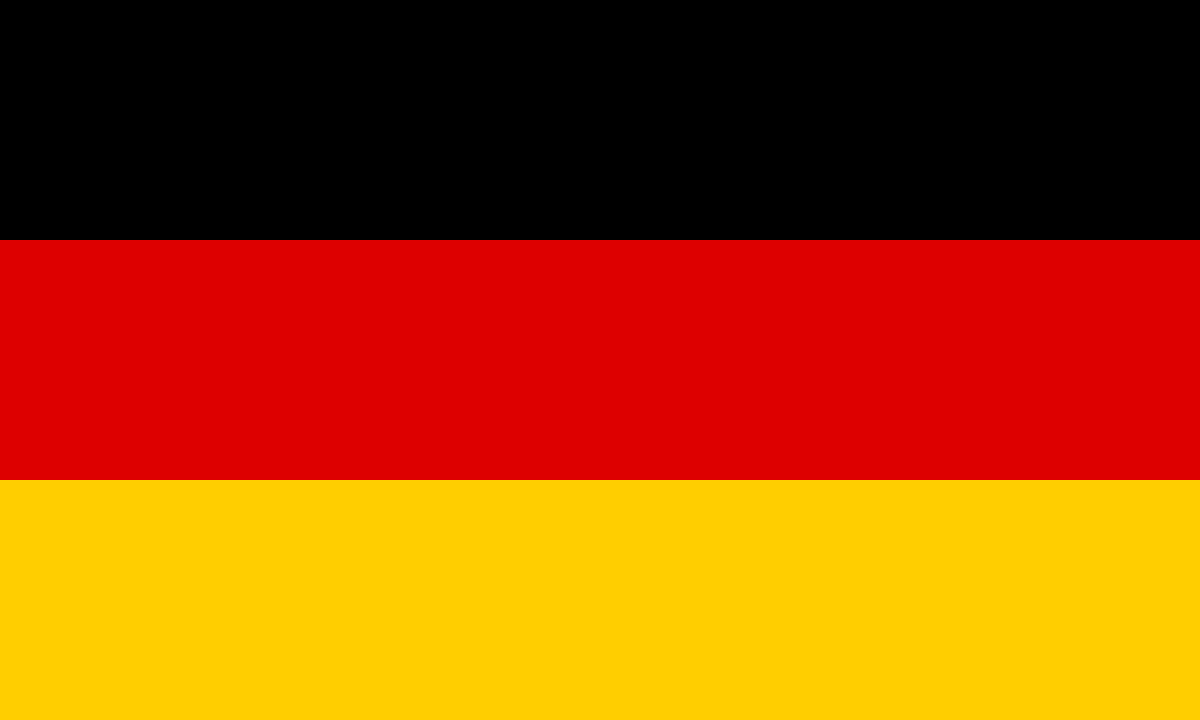Class History: The Type IX U-boat was designed by Nazi Germany's Kriegsmarine in 1935 and 1936 as a large ocean-going submarine for sustained operations far from the home support facilities. Type IX boats were briefly used for patrols off the eastern United States in an attempt to disrupt the stream of troops and supplies bound for Europe. The extended range came at the cost of longer dive times and decreased maneuverability. It was derived from the Type IA, and appeared in various sub-types.
Type IXs had six torpedo tubes; four at the bow and two at the stern. They carried six reloads internally and had five external torpedo containers (three at the stern and two at the bow) which stored ten additional torpedoes. The total of 22 torpedoes allowed U-boat commanders to follow a convoy and strike night after night. Some of the IXC boats were fitted for mine operations; as mine-layers they could carry 44 TMA or 66 TMB mines.
Secondary armament was provided by one 10.5 cm (4.1 in) deck gun with 180 rounds. Anti-aircraft armament differed throughout the war. They had two periscopes in the tower. Types IXA and IXB had an additional periscope in the control room, which was removed in Type IXC and afterward.
Type IXs had six torpedo tubes; four at the bow and two at the stern. They carried six reloads internally and had five external torpedo containers (three at the stern and two at the bow) which stored ten additional torpedoes. The total of 22 torpedoes allowed U-boat commanders to follow a convoy and strike night after night. Some of the IXC boats were fitted for mine operations; as mine-layers they could carry 44 TMA or 66 TMB mines.
Secondary armament was provided by one 10.5 cm (4.1 in) deck gun with 180 rounds. Anti-aircraft armament differed throughout the war. They had two periscopes in the tower. Types IXA and IXB had an additional periscope in the control room, which was removed in Type IXC and afterward.
Country: Germany is a Western European country with a landscape of forests, rivers, mountain ranges and North Sea beaches. It has over 2 millennia of history. Berlin, its capital, is home to art and nightlife scenes, the Brandenburg Gate and many sites relating to WWII. Munich is known for its Oktoberfest and beer halls, including the 16th-century Hofbräuhaus. Frankfurt, with its skyscrapers, houses the European Central Bank.
Item created by: gdm on 2015-10-03 06:22:10. Last edited by gdm on 2019-10-13 17:41:51
If you see errors or missing data in this entry, please feel free to log in and edit it. Anyone with a Gmail account can log in instantly.
If you see errors or missing data in this entry, please feel free to log in and edit it. Anyone with a Gmail account can log in instantly.


